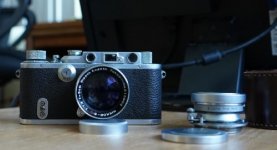Shac
Well-known
I know there is at least one: Michael, our member Dralowid, has one. But you are right, I forgot to mention this model. The difference between III and IIIa however is extremely small.
Erik.
Many thanks Erik. I also saw todays thread on black IIa's by Dralowid
David








